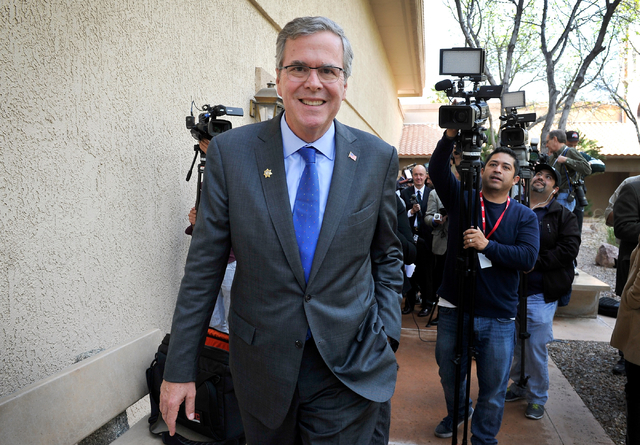What the Bushes teaches us about religion and family life


![]() Jeb Bush, a likely (very likely) 2016 presidential candidate, does not belong to the faith of his father. He also does not belong to the faith of his brother. Jeb Bush belongs to the faith of his wife.
Jeb Bush, a likely (very likely) 2016 presidential candidate, does not belong to the faith of his father. He also does not belong to the faith of his brother. Jeb Bush belongs to the faith of his wife.
In that respect, the Bushes represent one of the great shifts in American religious identity, a shift that occurred largely in the second half of the 20th century. A growing tolerance for religious plurality has become, in many ways, a defining characteristic for American families, but it wasn’t always that way. The Bush political dynasty provides a fascinating example of a modern American family of faith.
Of Protestants and Catholics
America has already seen two Bush presidents, both of them protestant. George H.W. Bush, Jeb’s father who served as president from 1989 to 1993, was born and raised in an Episcopalian household, a faith he retains to this day. George W., Jeb’s brother who served as president from 2001 to 2009, was raised in his father’s Episcopalian faith but joined the United Methodist Church in 1977. In 1985, George W. was “born again” and has considered himself evangelical ever since.
Like his brother George W., Jeb was raised in his father’s Episcopalian faith, but he converted to the Catholic Church in 1996. Though they act as a high-profile example, the Bush boys aren’t terribly special in their mixture of sects of Christianity. According to the Pew Forum on Religion and Public Life, “Roughly 44 percent of Americans now profess a religious affiliation that is different from the religion in which they were raised.”
In fact, religious homogeneity in general is on the decline. That is to say, as researchers David Campbell and Robert Putnam have found, it is less likely that one’s friends, neighbors and family all belong to the same religion.
Marriage and family
Putnam and Campbell also describe the rise of interfaith marriage in the 20th century, which relates specifically to the Bushes. Both Jeb and George W. married outside the family church and later joined the faith of their wives.
Close to half of the marriages in America begin as interfaith, according to Putnam and Campbell’s book, “American Grace: How Religion Divides and Unites Us.” But that number drops to one third as the marriages progress.
According to Putnam and Campbell, that’s because either “one spouse has converted to the other’s faith, or both have converted to a third faith.” (It’s important to note that for this statistic, Putnam and Campbell divide faith traditions up as “evangelical, mainline, black protestants, Catholics, Jews, Mormons and ‘other faiths.’”)
Of the two Bush brothers, Jeb’s marriage to his wife, Columba, represents the largest shift in American attitudes toward religion. The fact that Jeb was raised protestant and Columba was raised Catholic would make their marriage inappropriate to 40 percent of Americans in 1968, according to a Gallup poll cited by Putnam and Campbell. Gallup stopped asking the question in 1982, when that percentage dropped to 20 percent, indicating a major shift in attitude that has now become the norm.“In short, during the 20th century both the norms governing religious intermarriage and actual marriage patterns moved toward greater interfaith openness and integration,” Putnam and Campbell conclude in their book, most notably because “religiously insular generations were succeeded by their more open-minded children.”













